Boost role clarity and close skill gaps across frontline teams
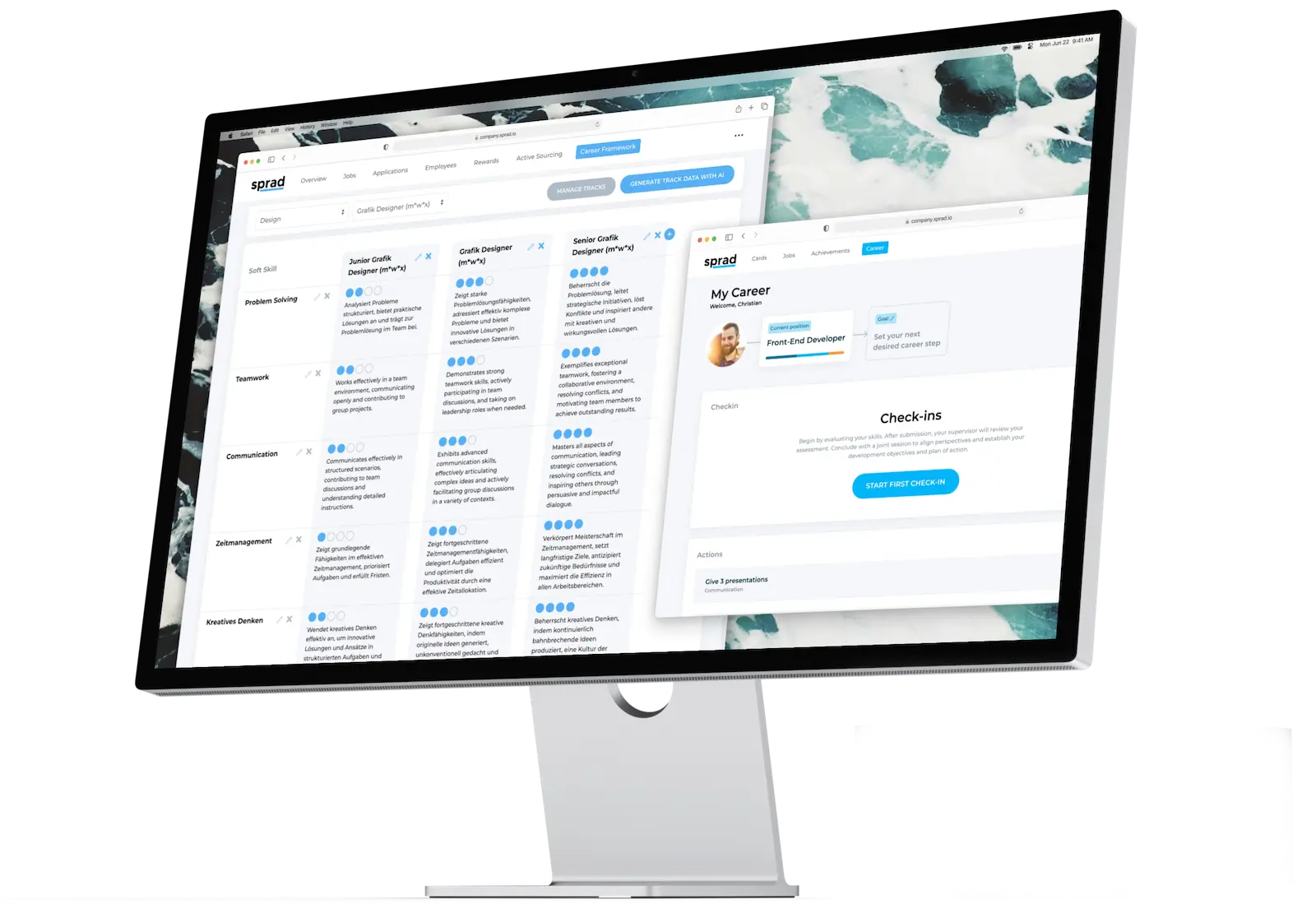
















Empower every shift with reliable skill data
Sprad ensures frontline teams stay visible and up-to-date, even without inbox access or desktop tools.
Mobile participation. Blue collar teams update skills securely from any device.
Timely gap alerts. Managers receive real-time prompts before critical shifts.
Consistent records. Skill data remains accurate across all business units and sites.
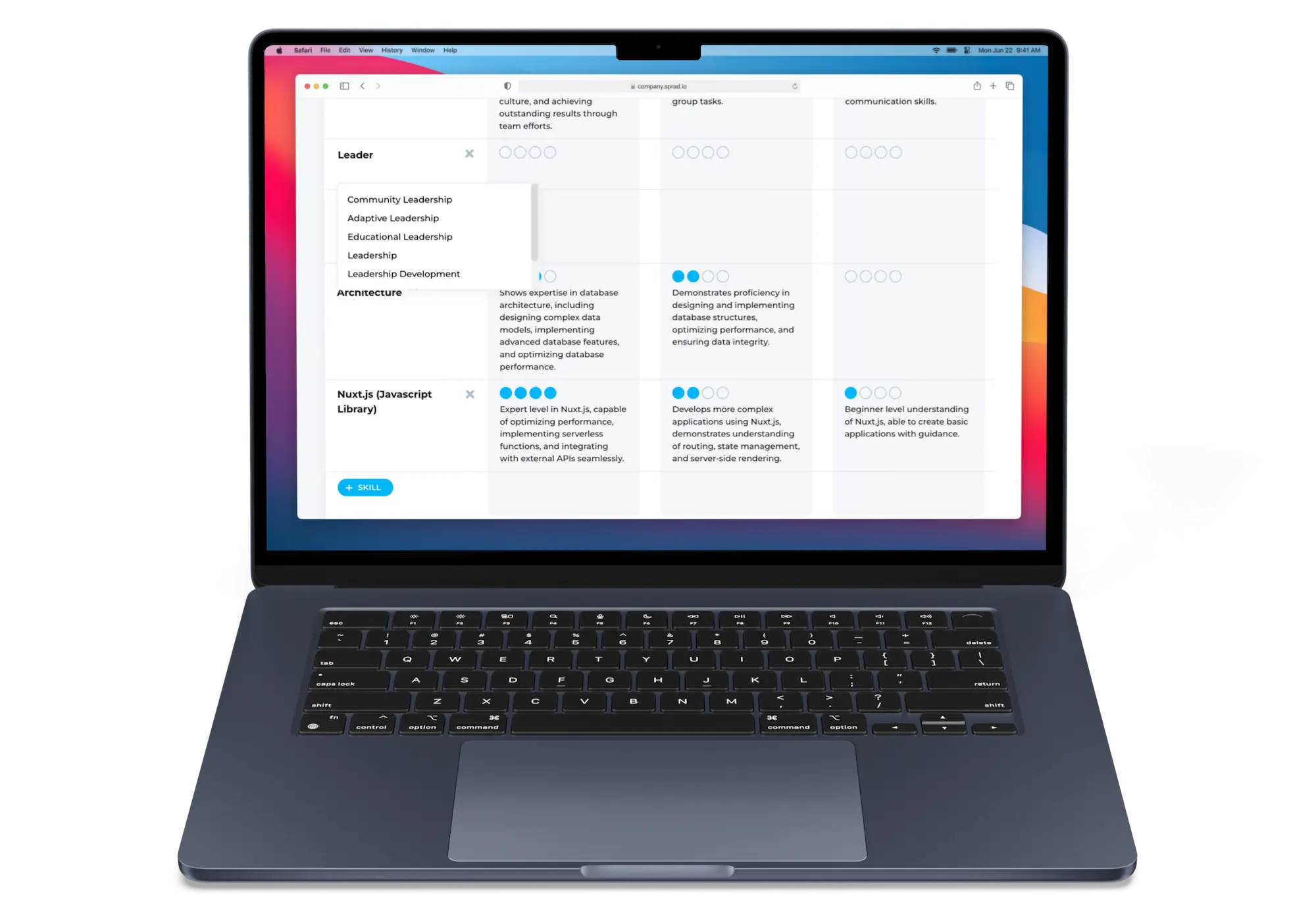










Drive skill clarity and action across all sites
Sprad connects frontline teams, managers, and HR to keep skill data current, identify gaps, and enable targeted development at enterprise scale.
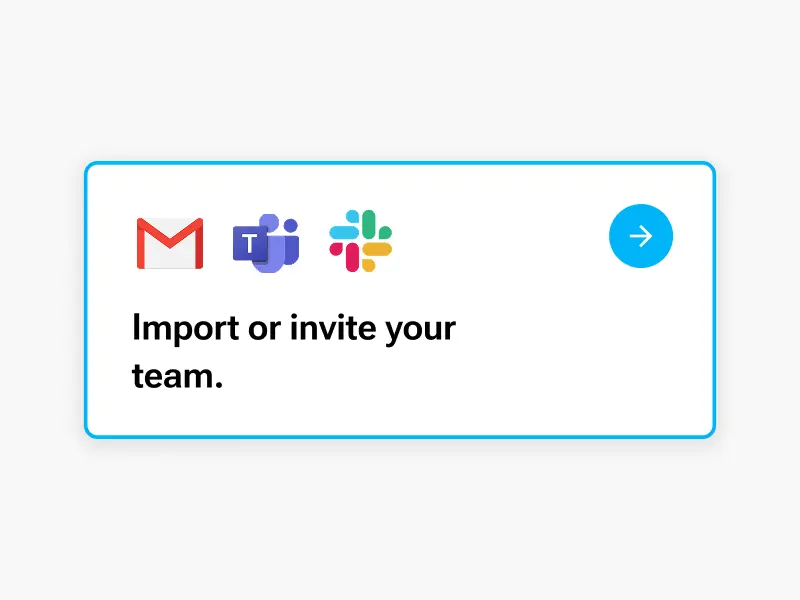
Connect mobile channels and integrate with core HR systems
Mobile access. Frontline teams update skills securely from any device, even without inbox access. Participation is enabled through privacy-compliant mobile links.
System integration. Sprad synchronizes with enterprise HRIS and payroll platforms. Skill data flows seamlessly across business units for consistent records.

Build workflows for skill mapping and automated development cycles
Skill mapping. Managers assign role-based skills using standardized taxonomies. Proficiency levels are tracked for each employee by job family and site.
Automated nudges. The platform sends timely reminders before critical shifts. Employees receive prompts to update profiles and complete learning steps as needed.
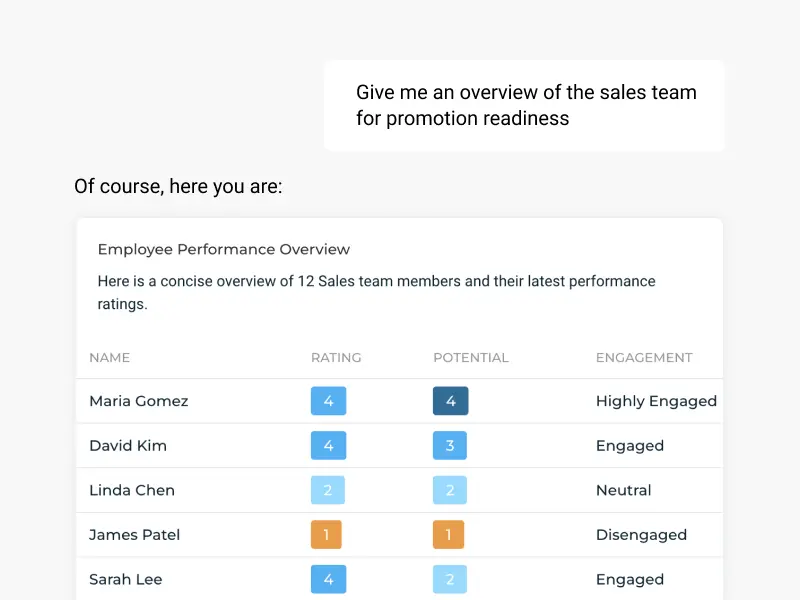
Analyse workforce skill data and generate actionable reports
Live dashboards. Managers view real-time heatmaps of team capabilities. Gaps are flagged before they impact shift coverage or safety-critical roles.
Enterprise analytics. HR accesses consolidated reports by region or unit. Insights support compliance, enablement, and long-term workforce planning.
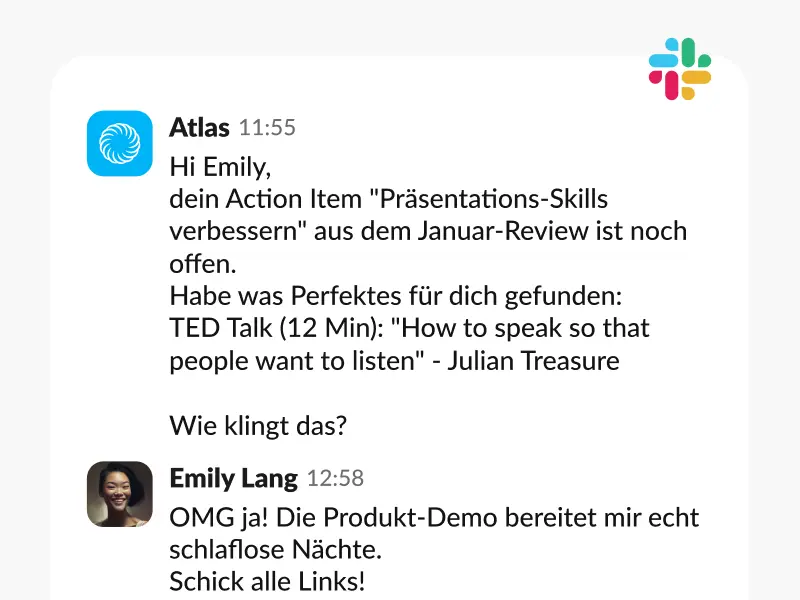
Empower employees with career coaching and growth suggestions
Personalized coaching. Each employee receives tailored development paths based on verified skills. Suggestions are delivered in a clear, actionable format for frontline roles.
Career visibility. Employees see transparent opportunities for upskilling or internal moves. Consent-based sharing ensures privacy while supporting mobility across the enterprise.
How does Skill Management Software for Large Enterprises teams work?
Sprad helps large enterprises map skills, align roles, and close capability gaps fast. The tool consolidates role frameworks, proficiency levels, and learning paths, so HR and managers know who can do what, where to upskill, and how to prioritize development for business impact.
In Large Enterprises, Skill Management Software helps HR leaders move from reactive processes to clear, data-driven improvements. Sprad structures skills by job family and level, supports governance, and links growth to outcomes. This strengthens workforce engagement while keeping skill inventories consistent across regions and business units.
- Skill visibility dashboard: fewer blind spots.
- Learning suggestions: more specific coaching notes.
- Competency taxonomy: clear ownership of next steps.
Sprad adds proactive nudges and privacy-compliant workflows, so teams update profiles and managers see gaps in time to act.
All-in-One Talent OS
Provide employees and managers with a single hub for all career-related needs: referrals, performance, engagement, development, and coaching.












Your people are your business
Ensure both are successful - with Sprad.
Why choose Skill Management Software for Large Enterprises skill mapping?
In Large Enterprises, Skill Management Software helps HR leaders move from reactive processes to clear, data-driven improvements. Sprad is a platform that standardizes capabilities, roles, and progression at scale. Skill Management Software for Large Enterprises establishes a shared language for skills across units while remaining privacy-compliant.
What outcomes matter at enterprise scale?
Enterprises need consistent role clarity, shorter cycle time, and higher completion rates on development actions. With 36% of employees in Europe and the United States reporting dissatisfaction, organizations benefit from transparent paths that connect skills to business goals. Sprad focuses on outcomes first, then method, making development tangible for employees and leaders.
How does Sprad drive participation across all roles?
Sprad prioritizes activation over passive forms. The platform nudges employees to keep profiles current, suggests learning tied to role requirements, and prompts managers to review skill evidence during check-ins. For Blue Collar teams, secure mobile links enable participation without extra accounts.
- Skill taxonomy governance: shorter cycle time.
- In-channel nudges: higher completion rates.
- Development check-ins: more specific coaching notes.
Practical scenario: A plant manager opens the team view before a shift handover. The platform highlights missing proficiencies for a critical machine, proposes two cross-training steps, and surfaces recent coaching notes. The manager selects a short learning path and assigns a buddy. After the shift, the platform records outcomes and suggests the next micro-task for validation.
Risks of traditional approaches: Email threads, spreadsheets, and annual forms rarely capture dynamic changes in skills. Non-desk staff are often invisible, updates lag, and decisions rely on incomplete data. This causes tracking gaps, delayed staffing choices, and inconsistent coaching that weakens execution when demand spikes.
What does implementation and governance look like?
Sprad is designed for rapid implementation with enterprise-grade security, SSO, and configurable integrations. The platform imports existing role libraries, maps proficiencies, and aligns naming to your governance model. Privacy-compliant settings control visibility by role and geography, ensuring skills data is shared on a need-to-know basis without friction.
How do managers and HR use insights?
Managers access a live heatmap to see who meets, exceeds, or is in progress on required capabilities. HR views aggregated people analytics to spot emerging gaps, compare pipelines across sites, and prioritize enablement. Atlas assistance provides factual suggestions for profile updates and content alignment without adding extra steps.
How does Sprad support future workforce moves?
The platform links verified skills to internal opportunities, enabling talent mobility and structured succession planning. HR can evaluate bench strength for key roles, while employees see development paths that are realistic and transparent. This reduces blind spots and strengthens clear ownership of next steps during staffing decisions.
The outcome is a dependable skills backbone that improves role clarity, development quality, and allocation decisions across complex organizations.
FAQs
Beispiel Antwort
Beispiel Antwort


